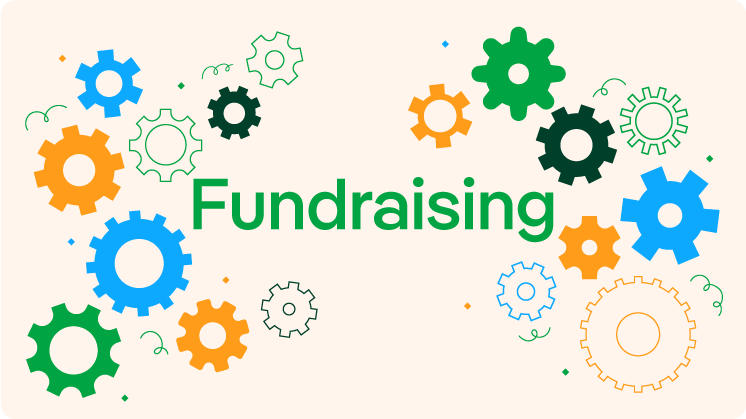The Function of Area Interaction in Nonprofit Fundraising: Building Lasting Relationships for Sustainable Assistance
Neighborhood interaction is progressively identified as an essential part of successful nonprofit fundraising. The methods and approaches employed to engage neighborhoods differ extensively, elevating vital concerns about performance and effect.
Understanding Community Engagement
Area involvement is an essential component of successful not-for-profit fundraising initiatives. Nonprofits must determine vital stakeholders-- such as neighborhood members, neighborhood services, and various other organizations-- to develop effective interaction strategies.
Effective area interaction is predicated on energetic listening and responsiveness to the demands and passions of the community. This process entails obtaining responses, recognizing neighborhood characteristics, and guaranteeing that the organization's objective aligns with local top priorities. Engaging the community can take different forms, consisting of public conferences, volunteer opportunities, and partnership campaigns, each created to motivate participation and financial investment in the company's goals.
Furthermore, neighborhood involvement need to be approached as an ongoing dialogue instead than an one-time initiative. By fostering a comprehensive atmosphere where area voices are listened to and valued, nonprofits can build a solid foundation for future fundraising undertakings. Ultimately, a deep understanding of area engagement equips companies to create genuine connections that enhance their general efficiency and sustainability.
Advantages of Solid Relationships
Solid relationships developed via area engagement yield countless advantages for nonprofit fundraising initiatives. First and foremost, these relationships foster count on and credibility, important elements in motivating donors to contribute. When possible supporters see a not-for-profit actively included in their community, they are most likely to think in its goal and impact.

Moreover, these relationships promote efficient interaction. Nonprofits can utilize their connections to share stories of impact, updates, and needs, making sure that supporters stay informed and engaged. This open line of interaction not just strengthens bonds yet also urges referral promo, expanding the nonprofit's reach.
Lastly, solid area ties can draw in brand-new partners and sponsors. People and organizations are more likely to straighten with companies that demonstrate meaningful community involvement, offering added resources and assistance that can dramatically improve fundraising capacities. Hence, growing durable partnerships with community engagement is important to a not-for-profit's long-lasting fundraising success.
Strategies for Effective Involvement
How can nonprofits successfully engage their areas to improve fundraising efforts? Normal updates, engaging material, and calls-to-action can galvanize community passion and involvement.
2nd, hosting area events, such as workshops, volunteer chances, or fundraising drives, promotes face-to-face communication, enabling nonprofits to showcase their influence and initiatives. These occasions not just increase funds yet also cultivate relationships and enable community members to engage directly with the reason.
Third, carrying out individualized interaction methods can improve involvement. Customizing messages to details contributor segments based on rate of interests and past payments fosters a sense of belonging and investment in the organization's mission.
Last but not least, creating collaborations with regional companies and community leaders can amplify outreach efforts. Collective campaigns can improve visibility and reliability, demonstrating a collective commitment to the community's health. By integrating these approaches, nonprofits can develop lasting partnerships that enhance fundraising efforts and drive lasting support.
Gauging Involvement Success
While engaging the community is important for successful nonprofit fundraising, determining the performance of these involvement initiatives is equally essential. Establishing clear metrics allows companies website here to analyze just how well they are getting in touch with their target market and attaining their fundraising objectives. Secret performance signs (KPIs) such as contributor retention rates, volunteer participation levels, and involvement on social networks systems offer tangible information for assessment.

On a regular basis evaluating these metrics makes it possible for companies to pivot their methods when required, making sure that community engagement stays lined up with their total goal. In addition, sharing these outcomes with stakeholders fosters transparency and constructs depend on, urging further area participation. Eventually, a robust dimension framework not only informs future fundraising initiatives but also strengthens the connection between the not-for-profit and its fans, laying the groundwork for lasting success.
Study in Neighborhood Influence
Numerous case research studies highlight the profound impact that area engagement can carry not-for-profit fundraising success. One significant example is the "Food for Thought" initiative, where a neighborhood food bank partnered with businesses and schools to host community suppers. These occasions not just increased funds however likewise fostered a feeling of belonging amongst participants, significantly raising benefactor retention rates.
One more engaging situation is the "Green Spaces Project," which involved neighborhood citizens in the revitalization of city parks. This effort not just amassed financial support from neighborhood companies however additionally grew a volunteer base that added to recurring upkeep and programs. The feeling useful source of ownership and satisfaction among area members converted right into sustained payments.
In the realm of arts, the "Art for All" project effectively involved regional musicians and clients to develop joint art installments, causing boosted visibility and contributions for a regional arts not-for-profit.
These examples highlight that when nonprofits focus on neighborhood participation, they can create enduring connections that boost fundraising efforts, ensuring sustainable support and fostering a lively community culture. Such instances demonstrate that community involvement is not merely an approach but a crucial column of not-for-profit success.
Conclusion
In verdict, neighborhood engagement is integral to the success of nonprofit fundraising initiatives. Eventually, a robust structure of area assistance not only enhances fundraising possible yet likewise grows a culture of partnership, necessary for achieving long-lasting business objectives and sustaining significant effect. fundraising consultant.
Nonprofits should determine key stakeholders-- such as community participants, regional services, and various other companies-- to create effective engagement approaches.

In verdict, community interaction is indispensable to the success of read this post here not-for-profit fundraising efforts.